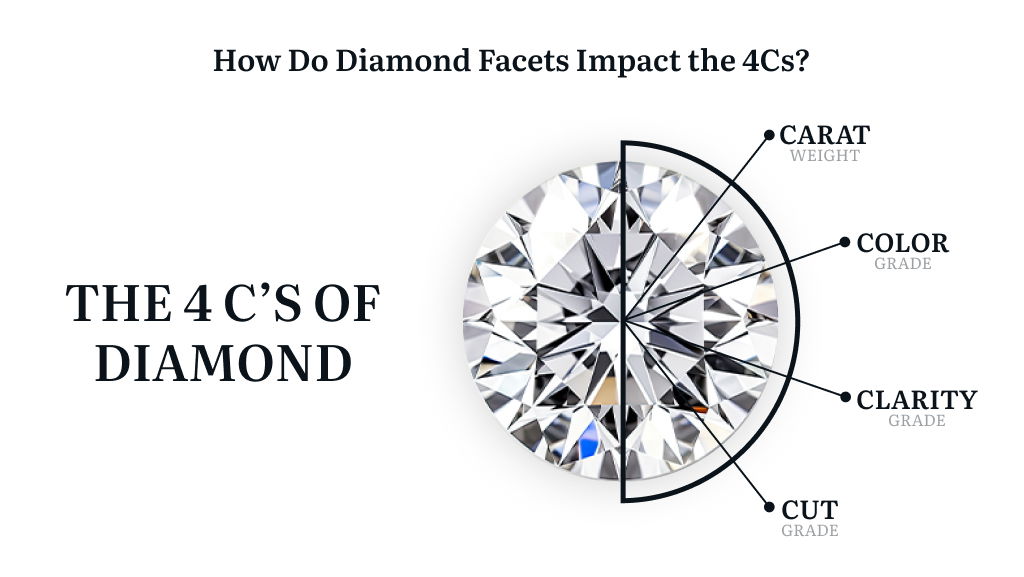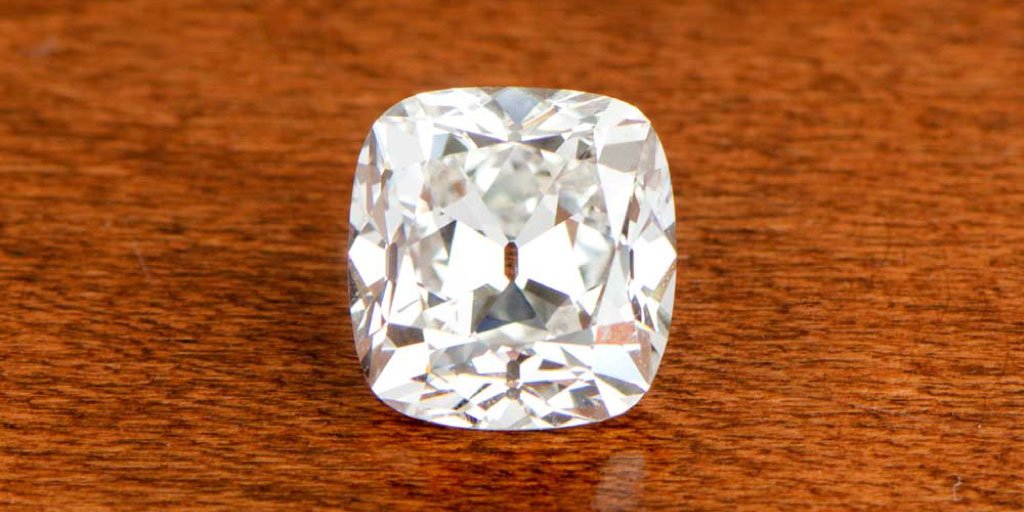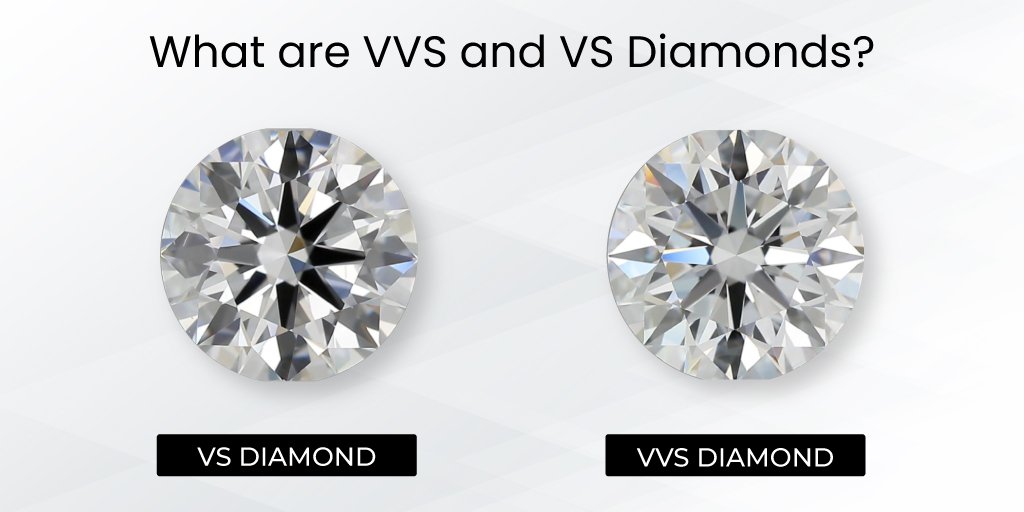Flush Fit vs. Non-Flush Fit Engagement Rings
One important choice when purchasing an engagement ring is whether to go with a flush fit or non-flush fit style. Choosing between these two styles depends on how you want the engagement ring to sit near the wedding band. Each style is designed to showcase the center stone in a unique way. A flush fit engagement ring is designed to sit comfortably against the skin and align closely with the wedding band, making it suitable for everyday wear.
In contrast, a non-flush fit engagement ring has a higher profile, creating a slight gap that makes the center stone more prominent. Both styles offer unique aesthetics and have distinct visual appeal. In this article, we’ll explore the pros and cons of these two styles and other important details.
What is a Flush Fit Engagement Ring?
A ring that sits smoothly and closely against the skin, aligning evenly with the wedding band and avoiding any gaps, is known as a flush fit engagement ring. These engagement rings have a low profile, meaning the center stone is set lower. The main stone is securely placed without protruding much, making it comfortable for everyday wear. This style provides a sleek, smooth, and comfortable look with a well-protected stone.
What is a Non Flush Fit Engagement Ring?
An engagement ring designed not to sit close to the wedding band or flat against the skin is called a non-flush fit ring. In this design, the center or main stone has a high setting profile, creating a gap between the engagement ring and the wedding band. The size of this gap can vary depending on the ring style. This style is ideal for those who want their main stone to stand out, as it provides an elevated look that draws attention to the center stone and gives the ring a larger, more striking appearance.
Pros and Cons Of Flush Fit vs. Non-Flush
Both types of engagement ring fits have their own pros and cons, which set them apart. Below is a table comparing the two, highlighting the advantages and disadvantages to help in your decision-making process.
Which to Choose: Flush-fit or Non-flush-fit Engagement Ring
The choice between a flush fit and non-flush fit engagement ring depends on your personal preferences, style, and desired look. A flush fit engagement ring offers a smooth, exquisite, and refined appearance by sitting closely against the wedding band. This style enhances gemstone security and provides comfort for everyday wear. Its design minimizes the risk of snagging on clothing, making it ideal for those seeking a subtle look.
| Features | Flush Fit Engagement ring | Non-Flush Fit Engagement ring |
Pros |
Offers a sleek, elegant and simple appearance | Provides a traditional, elaborate, and versatile look |
| Sits smoothly against the skin and close to the wedding band, avoiding any gap | Allows for intricate and versatile design | |
| With the low profile it avoids the snagging on clothes | Creates a bolder, eye-catching look | |
| Can be worn comfortably daily | Attracts attention on center stone by making it appear larger | |
| Flush Fit engagement ring is easy and convenient to maintain | May require more frequent cleaning due to detailed settings | |
| It enhances the security of the stone | Can be set with various setting style like bezel, prong and halo | |
Cons |
Limit designs are available compared to non-flush fit | Slightly higher risk of snagging on clothes due to the protruding center stone |
| Is not preferable to the ones looking for elaborative design | Some designs are not suitable for the specific shapes and sizes | |
| The center stone looks less noticeable | Not much comfortable to wear every day |
In contrast, a non-flush fit engagement ring is designed to showcase the center stone, giving it an elevated look. This style often includes delicate patterns and creates a sophisticated visual for the central gemstone, perfect for those who want a more striking appearance. However, this style may require a bit more maintenance and may not be as comfortable for daily wear. If you prioritize comfort, a non-flush fit might not be the best choice.
Ultimately, the decision comes down to your personal style. Choose a flush fit for subtle elegance or a non-flush fit for a bold and eye-catching look.
What types of settings cause a flush-fit issue with wedding bands?
It is important to choose the ideal settings when purchasing a flush-fit engagement ring, as certain settings can create a gap between the engagement ring and wedding band. Here are some settings that can cause flush-fit issues with wedding bands:
High-Profile Settings: This setting elevates the placement of the center stone, creating a slight space between the wedding band and engagement ring. The raised height of the diamond can prevent the rings from sitting smoothly together.
Long Prong Setting: While prong settings hold the stone securely, large or outward-extending prongs may cause the wedding band to sit slightly away, creating a small gap between the band and engagement ring.
Halo Setting: A halo setting surrounds the center stone, adding height and a bulkier appearance, which can make it difficult for the engagement ring to sit closely against the wedding band.
Bezel Setting: Bezel settings provide extra security by surrounding the stone with metal. However, this metal can prevent the wedding band from aligning perfectly with the engagement ring.
Understanding how different settings affect the placement of the engagement ring and wedding band can help you choose the ideal flush-fit ring that aligns perfectly with your wedding band.
How important is your wedding band sitting flush to you?
The choice of a flush-fit engagement ring setting depends on personal preference and lifestyle. This style creates a seamless and uniform look by allowing the wedding band to sit flush with the engagement ring, making them appear as a single piece. It also makes the ring comfortable for everyday wear, reducing the risk of snagging on clothing. An engagement ring with a low setting allows the wedding band to sit closer and smoothly against the skin without leaving any gap.
If you don’t mind a slight gap, a similar non-flush fit style can also offer a unique fashion statement. Ultimately, the choice comes down to what best resonates with your personality.
Will a flush-fit engagement ring impact my choice of wedding band?
Yes, a flush-fit engagement ring impacts the choice of your wedding band, as it sits closely against it. The engagement ring pairs best with low-profile bands to achieve a flush, gap-free look. However, certain bands complement the engagement ring even more, giving it a seamless appearance.
- Slim or low-profile bands, like classic styles, work well with a flush-fit engagement ring for a cohesive and clean look.
- Engagement rings with intricate details may pair nicely with contoured or curved bands, which align smoothly with the ring’s design to create a precise flush fit.
- To achieve a unique and enhanced look, consider mixing metals in different materials and colors to match the engagement ring. This blend of metal bands creates a distinctive appearance, making the set look like a single, cohesive piece of art.
Customizing your engagement ring can also help you achieve a unique, personalized design. Jewelers like Loose Grown Diamond offer CAD (Computer-Aided Design) options that provide a 3D visualization of your engagement ring. This helps jewelers design the piece accurately, reducing the risk of mistakes and offering a preview of the final product. This approach is particularly helpful for gap casting and finishing, ensuring a perfect flush fit in the final product.
Conclusion
A flush-fit engagement ring is an ideal choice for those who want to achieve a seamless, elegant, and subtle look, whereas non-flush-fit rings provide a bolder appearance and make the center stone more prominent. Both ring styles have their advantages, so it is important to consider some key factors before choosing the one that best suits you.
FAQs
Is a flush fit comfortable for everyday wear?
Yes, a flush fit is comfortable for everyday wear, as it sits smoothly against the skin. However, comfort can also depend on the design and personal style.
Which style makes the center stone stand out more?
A non-flush fit style makes the center stone stand out more, as it creates a gap between the band and the ring, making the stone more prominent.
Can you stack a flush-fit ring with multiple bands?
Yes, you can stack flush-fit rings with multiple bands and styles. They sit close to the skin and the ring without creating a gap.
Do flush-fit rings limit design choices?
Due to the focus on a low profile and close alignment with the wedding band, flush-fit engagement rings come in limited design options.
Is it more expensive to get a custom flush-fit wedding band?
Customized flush-fit rings are generally more expensive than standard wedding bands and rings.
Which is more popular, flush-fit or non-flush-fit rings?
Flush-fit rings are more popular due to their seamless look and classy fit.
Can I resize a flush-fit engagement ring without causing a flush issue?
Yes, it can be resized under professional supervision, and customization is possible with the help of CAD (Computer-Aided Design) technology.
What if my engagement ring and wedding band don’t sit flush?
This may mean there is a slight gap between the two, which could be due to factors like the size of the engagement ring or the gemstone setting style.






